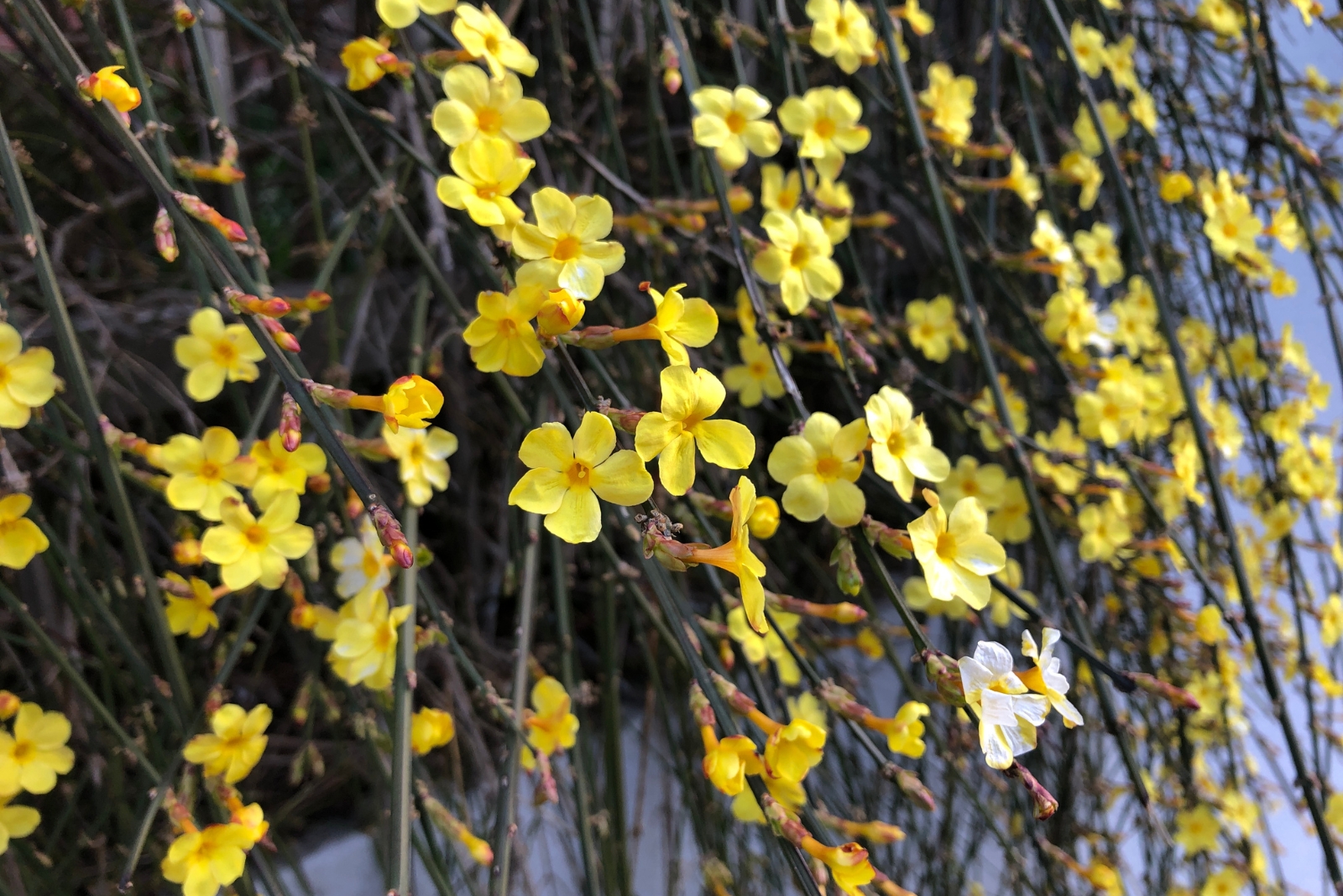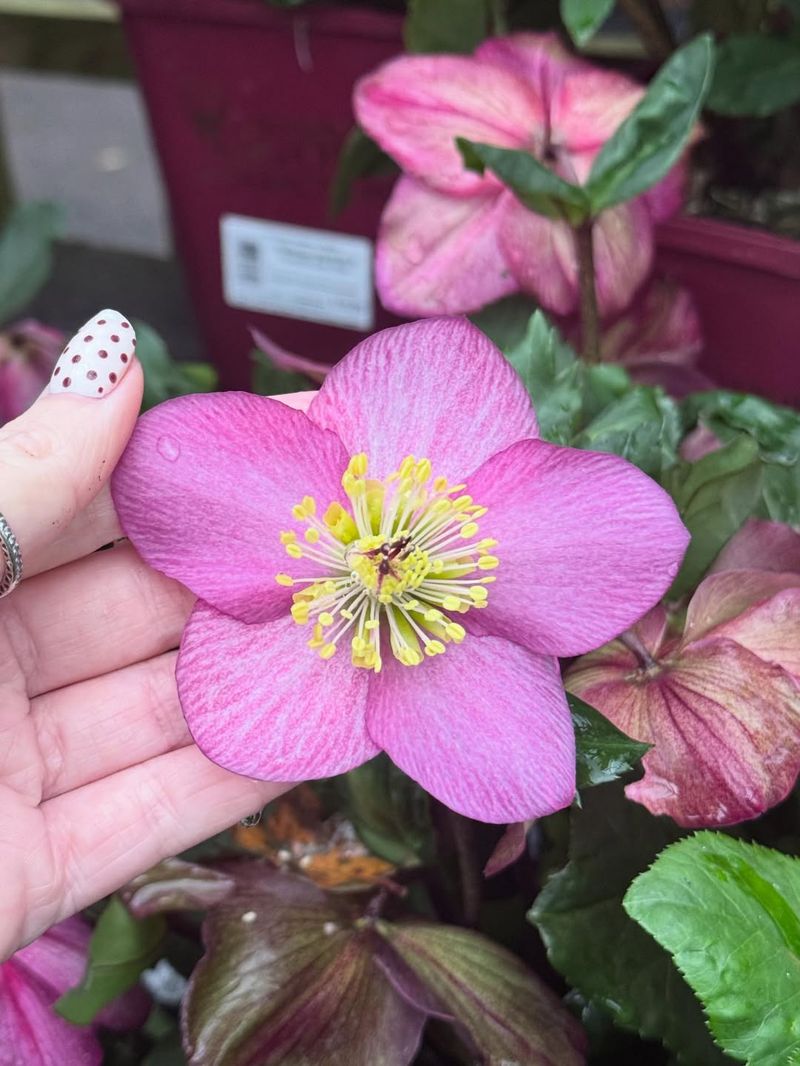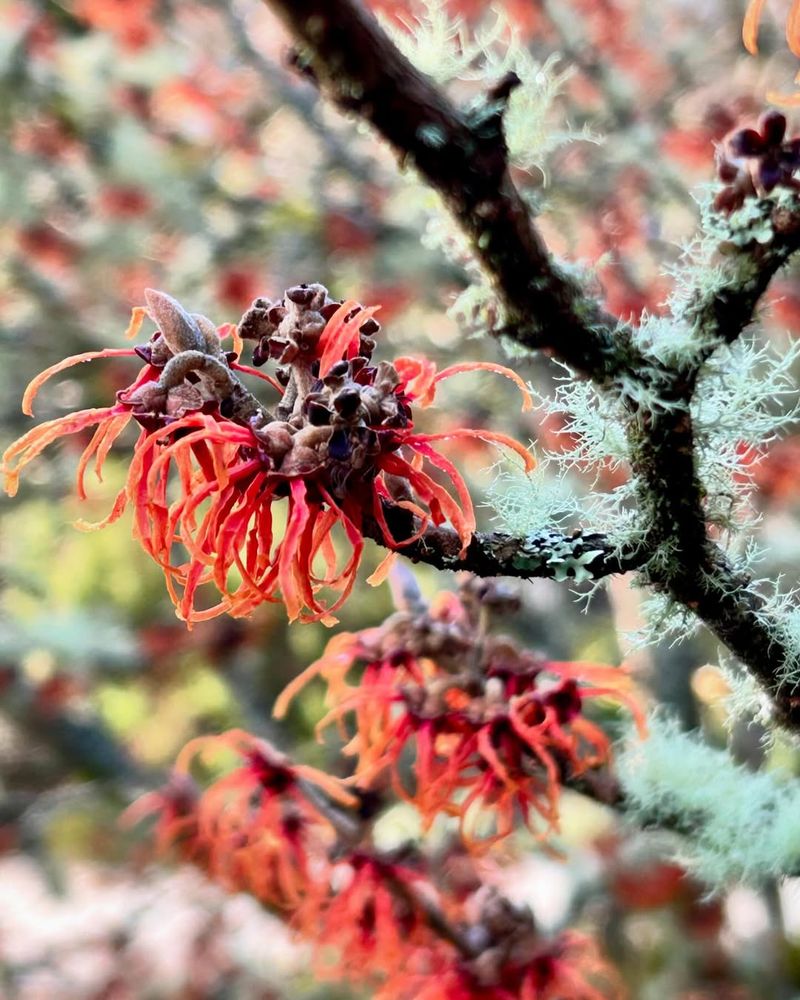Cold, gray days in Washington feel a lot brighter when you spot a perennial that refuses to quit blooming. I still get a little spark of joy from the ones that push through frost like it’s no big deal.
They bring color at a time your yard usually feels half-asleep. You’ll see how these tough bloomers can carry your garden through winter without a fuss.
1. Hellebore (Christmas Rose)
Often called the Christmas Rose, hellebores start blooming in late winter when most plants are still sleeping. Their nodding flowers come in whites, pinks, purples, and even greens, creating a magical display against snow or frost.
Washington gardeners love these because they thrive in shady spots where other plants struggle. Once established, they’ll come back year after year without much fuss. Plant them under trees or along shaded pathways for a delightful winter surprise that brightens even the gloomiest days.
2. Winter Jasmine
Bright yellow flowers burst from bare stems before spring even thinks about arriving. Winter jasmine doesn’t mind Washington’s chilly temperatures and actually prefers the cooler weather for its best bloom display.
This plant works great as a groundcover or trailing over walls and fences. The cheerful yellow color stands out beautifully against gray winter skies, bringing instant happiness to anyone who sees it. Water it regularly during dry spells, and it’ll reward you with weeks of sunny blooms.
3. Bergenia (Elephant’s Ears)
With leaves shaped like elephant ears, bergenia is tough enough to laugh at frost. Washington winters turn its foliage beautiful shades of bronze and red, while pink or white flower clusters appear in late winter.
Gardeners appreciate how low-maintenance this perennial is. It handles both sun and shade, doesn’t need much water once settled, and deer usually leave it alone. The thick, glossy leaves look attractive all year, making it a fantastic choice for edging pathways or filling in garden beds.
4. Snowdrop
Nothing says hope quite like snowdrops poking through frozen ground. These dainty white flowers are among the earliest bloomers in Washington, sometimes appearing while snow still covers the garden.
Plant bulbs in fall, and they’ll multiply over the years, creating larger and larger displays. They prefer spots with good drainage and partial shade. Watching these brave little flowers push through winter’s grip reminds us that spring is always on its way, no matter how cold it feels outside.
5. Winter Heather
Carpets of tiny bell-shaped flowers cover winter heather from December through March across Washington gardens. Colors range from pure white to deep purple, and the evergreen foliage stays attractive even when flowers fade.
Bees absolutely love heather blooms during those rare sunny winter days. Plant several varieties together for a tapestry effect that looks professional yet requires minimal care. These plants prefer acidic soil, which Washington naturally provides in many areas, making them especially well-suited to local conditions.
6. Primrose
Cheerful primroses bring carnival colors to winter gardens throughout Washington. Available in practically every color imaginable, they start flowering in late winter and continue into spring, bridging the gap between seasons beautifully.
Plant them in containers near your front door or along walkways where you’ll see them daily. They appreciate moist soil and partial shade, conditions many Washington gardens naturally provide. Deadhead spent blooms regularly to encourage more flowers, and they’ll keep performing like tiny champions throughout the cold months.
7. Lenten Rose
Blooming around Lent, these hellebore cousins offer sophisticated beauty when Washington gardens need it most. Their flowers last for months, slowly fading to interesting shades as they age rather than dropping off suddenly.
Deer won’t touch them, slugs avoid them, and they thrive in shade where grass struggles to grow. Plant them beneath deciduous trees or shrubs for a woodland garden feel. The flowers nod downward, so plant them on slopes or in raised beds where you can appreciate their intricate details up close.
8. Cyclamen
Butterfly-like flowers seem to hover above marbled silver leaves, creating an enchanting scene in Washington’s winter gardens. Hardy cyclamen bloom from fall through early spring, providing color when most perennials are dormant.
These woodland natives prefer the dappled shade beneath trees and shrubs. Once established, they’ll self-seed and naturalize, creating larger colonies each year. Washington’s mild, wet winters suit them perfectly. Their unique appearance and reliable performance make them conversation starters that never disappoint during garden tours.
9. Crocus
Cup-shaped crocus flowers pop up through lawns and garden beds like nature’s confetti. Washington gardeners can enjoy these early bloomers starting in late winter, with purple, yellow, and white varieties available.
Plant corms in fall by the hundreds for maximum impact—they’re inexpensive and multiply naturally. Squirrels sometimes dig them up, so cover planting areas with chicken wire until the ground freezes. Bees emerge on warm winter days specifically to visit these flowers, making crocuses important for early pollinators seeking food.
10. Witch Hazel
Spidery ribbons of fragrant flowers appear on bare branches during Washington’s coldest months. Witch hazel blooms smell like spring even when temperatures hover near freezing, and colors range from yellow to orange to deep red.
This shrubby perennial grows slowly but lives for decades, becoming a family heirloom plant. It tolerates various soil types and doesn’t mind Washington’s winter rain. Position it near windows or pathways where you can enjoy the sweet fragrance during winter walks. Fall foliage turns brilliant gold before dropping.











